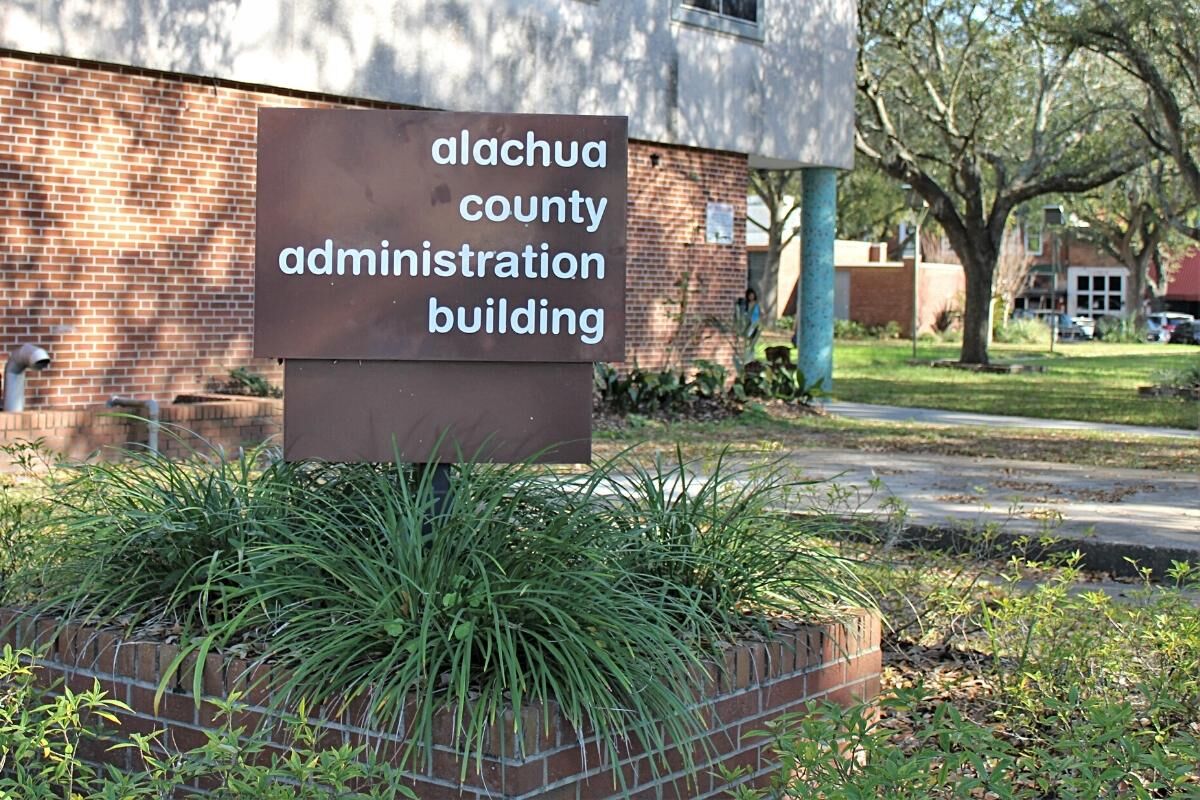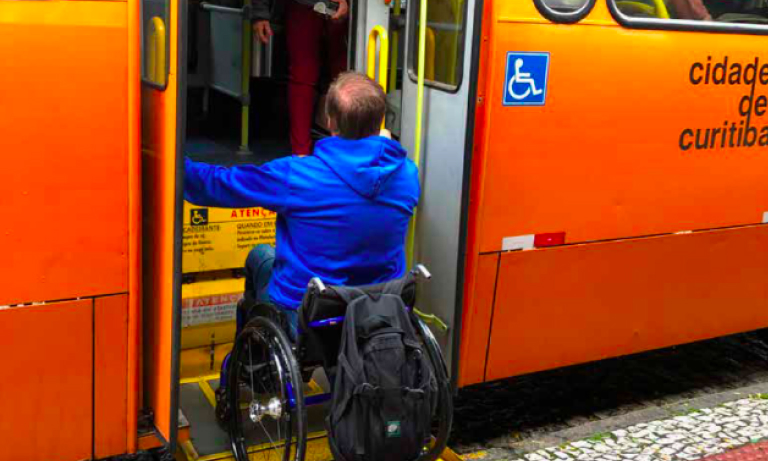(VIDEO) Join TriMet in celebrating 35 years of the Americans with Disabilities Act – TriMet News –

Report on TriMet’s Contributions to Sustainable Development Goals through Enhanced Transit Accessibility
Introduction: Aligning Urban Transit with Global Sustainability Objectives
This report details the historical evolution of the TriMet transit system in Portland, Oregon, analyzing its progression towards becoming a leader in accessible public transportation. The agency’s initiatives are examined through the lens of the United Nations Sustainable Development Goals (SDGs), particularly SDG 10 (Reduced Inequalities) and SDG 11 (Sustainable Cities and Communities). TriMet’s journey from initial accessibility challenges to pioneering inclusive transit solutions serves as a case study in applying sustainability principles to urban infrastructure.
Initial Infrastructure and Accessibility Deficiencies (1986)
Barriers to Inclusive Transit
The inauguration of TriMet’s MAX light rail system in 1986, while a significant advancement in public transportation, initially failed to meet the principles of inclusive infrastructure as outlined in SDG 10 and SDG 11. The first-generation trains were designed with stairs, creating a significant physical barrier that excluded individuals with disabilities, particularly wheelchair users, from accessing the service. This design flaw highlighted a systemic inequality in public service provision.
Community Advocacy for Equitable Access
In response to these challenges, community advocates like Jan Campbell, in collaboration with TriMet, established the Committee on Accessible Transportation (CAT) in 1984. This partnership was a critical first step in addressing the system’s shortcomings. The committee’s first major action was to advocate for the installation of wayside lifts on MAX platforms, a corrective measure to retrofit the system for accessibility and begin aligning the service with the goal of reducing inequality.
Legislative Impact and Systemic Integration of Accessibility
The Americans with Disabilities Act (ADA) and Proactive Compliance
The signing of the Americans with Disabilities Act (ADA) in 1990 provided a national legal framework prohibiting discrimination against people with disabilities. By this time, TriMet had already initiated measures to enhance accessibility, positioning the agency as a proactive leader in fulfilling the civil rights mandate. The agency’s philosophy has consistently been to view the ADA not as a ceiling, but as a foundation for continuous improvement in creating equitable transit.
Transit as a Lifeline to Achieving Sustainable Development Goals
As articulated by TriMet General Manager Sam Desue Jr., accessible public transportation is fundamental to community well-being and opportunity. It directly supports the achievement of several SDGs by providing essential connections for all residents. These connections include:
- SDG 10 (Reduced Inequalities): Ensuring independence and full community participation for people with disabilities and older adults.
- SDG 8 (Decent Work and Economic Growth): Providing reliable access to employment opportunities.
- SDG 4 (Quality Education): Enabling access to educational institutions.
- SDG 3 (Good Health and Well-being): Facilitating access to healthcare services.
Pioneering Low-Floor Technology for Inclusive and Sustainable Cities
A National Precedent in Accessible Design
In a landmark decision guided by the CAT, TriMet became the first transit agency in North America to adopt low-floor light rail vehicles for its 1997 west side extension. This innovation eliminated the need for mechanical lifts by allowing passengers with mobility devices to simply roll on board. This technological leap represented a profound contribution to accessible transit design and directly advanced the objectives of SDG 11 (Sustainable Cities and Communities) by making the urban environment more inclusive and accessible for all.
Legacy and Continued Improvement
The retirement of the original high-floor MAX train marks the end of an era defined by retrofitted accessibility and celebrates the transition to universally designed systems. The early adoption of low-floor technology set a new standard across the continent, demonstrating a commitment to proactive, integrated accessibility.
Conclusion: A Commitment to Ongoing Progress
TriMet’s evolution from a system with significant access barriers to a pioneer of inclusive transit demonstrates a sustained commitment to the principles enshrined in the Sustainable Development Goals. Through continuous collaboration with its Committee on Accessible Transportation, the agency continues to develop initiatives that enhance accessibility. These efforts are integral to fostering an equitable, sustainable, and resilient urban community, ensuring that public transportation truly serves as a connection to opportunity for every resident.
Analysis of Sustainable Development Goals in the Article
1. Which SDGs are addressed or connected to the issues highlighted in the article?
The article primarily addresses issues related to accessibility in public transportation for people with disabilities, which connects to several Sustainable Development Goals (SDGs) focused on equality, infrastructure, and sustainable communities.
-
SDG 10: Reduced Inequalities
This goal is central to the article, which focuses on empowering and including people with disabilities. The narrative describes the struggle against and the overcoming of discrimination in public services. The article states, “The world, at that time, including here in Portland, was not built for people with disabilities,” highlighting the inequality that existed. The subsequent efforts by TriMet and the passing of the Americans with Disabilities Act (ADA) are direct actions to reduce these inequalities.
-
SDG 11: Sustainable Cities and Communities
This goal is addressed through the article’s focus on improving public transportation to make it accessible for all citizens. An accessible transit system is a key component of a sustainable and inclusive city. As stated by TriMet’s General Manager, “public transportation isn’t truly public if it isn’t accessible to all… It’s a lifeline to independence, employment, education, health care and community.” This directly supports the creation of sustainable and inclusive urban environments.
-
SDG 9: Industry, Innovation and Infrastructure
The article highlights innovation in infrastructure as a solution to accessibility challenges. The development and adoption of new technologies in the transit system are key themes. The article mentions TriMet’s decision for the “early adoption of low-floor light rail vehicles,” which was an innovative solution at the time and considered “one of our greatest contributions to accessible transit.” This represents building resilient and inclusive infrastructure through innovation.
2. What specific targets under those SDGs can be identified based on the article’s content?
Based on the issues discussed, several specific SDG targets can be identified:
-
Target 10.2: Empower and promote the social, economic and political inclusion of all, irrespective of… disability…
The article directly relates to this target by detailing the efforts to ensure people with disabilities can access the MAX light rail system. The formation of the “Committee on Accessible Transportation” in 1984 is a clear example of promoting the political inclusion of people with disabilities in decision-making processes. The goal, as stated by activist Jan Campbell, was “so that persons with disabilities can live to their fullest potential and have a better life,” which is the essence of social and economic inclusion.
-
Target 10.3: Ensure equal opportunity and reduce inequalities of outcome, including by eliminating discriminatory laws, policies and practices…
This target is exemplified by the reference to the “Americans with Disabilities Act” signed in 1990, described as a “landmark legislation” that “prohibited discrimination in areas including employment, public services and transportation.” TriMet’s internal policies, which considered the “ADA an excellent starting point” but aimed to do more, also align with this target of eliminating discriminatory practices.
-
Target 11.2: Provide access to safe, affordable, accessible and sustainable transport systems for all… with special attention to the needs of… persons with disabilities…
This is the most directly relevant target. The entire article is a case study of a city’s transit authority working to meet this objective. The initial problem was that the “trains were not accessible, especially for people who used wheelchairs.” The solutions, such as installing “wayside lifts” and introducing “low-floor light rail vehicles,” were specific actions taken to provide an accessible transport system for people with disabilities.
-
Target 9.1: Develop quality, reliable, sustainable and resilient infrastructure… with a focus on affordable and equitable access for all.
The article discusses the evolution of the MAX light rail infrastructure. The initial system was not equitable, but through innovation and redesign, it was improved. The introduction of “low-floor trains – the nation’s first –” in 1997 represents the development of quality and sustainable infrastructure with a focus on equitable access, directly supporting this target.
3. Are there any indicators mentioned or implied in the article that can be used to measure progress towards the identified targets?
Yes, the article mentions and implies several indicators that can measure progress:
-
Existence of legislation and policies against discrimination (Indicator for Target 10.3)
The article explicitly mentions the “Americans with Disabilities Act” of 1990 as a key legislative milestone. The existence and enforcement of such a law is a primary indicator of progress in ensuring equal opportunity.
-
Proportion of public transport vehicles that are accessible (Indicator for Target 11.2)
The article implies this indicator by chronicling the transition from inaccessible trains requiring stairs to the introduction of fully accessible “low-floor light rail vehicles.” A measure of progress would be the percentage of the fleet that is low-floor and fully accessible.
-
Accessible infrastructure at transport hubs (Indicator for Target 11.2)
The installation of “wayside lifts” on MAX platforms is a specific, measurable improvement. The number or proportion of stations equipped with lifts, ramps, and other accessibility features serves as a direct indicator of progress.
-
Establishment of participatory bodies for vulnerable groups (Indicator for Target 10.2)
The article highlights the creation and influence of the “Committee on Accessible Transportation.” The existence and active involvement of such a committee in planning and decision-making is an indicator of the inclusion of people with disabilities.
4. Summary of Findings
| SDGs | Targets | Indicators Identified in the Article |
|---|---|---|
| SDG 10: Reduced Inequalities | 10.2: Promote social, economic, and political inclusion of all, including persons with disabilities.
10.3: Ensure equal opportunity and eliminate discriminatory laws and policies. |
|
| SDG 11: Sustainable Cities and Communities | 11.2: Provide access to safe, accessible, and sustainable transport systems for all, with special attention to persons with disabilities. |
|
| SDG 9: Industry, Innovation and Infrastructure | 9.1: Develop quality, reliable, and sustainable infrastructure with a focus on equitable access for all. |
|
Source: news.trimet.org

What is Your Reaction?
 Like
0
Like
0
 Dislike
0
Dislike
0
 Love
0
Love
0
 Funny
0
Funny
0
 Angry
0
Angry
0
 Sad
0
Sad
0
 Wow
0
Wow
0





































![Lancaster homeowner’s energy-efficient renovation sparks clash over historic preservation [Lancaster Watchdog] – LancasterOnline](https://bloximages.newyork1.vip.townnews.com/lancasteronline.com/content/tncms/assets/v3/editorial/9/ed/9ed03d32-c902-44d2-a461-78ad888eec38/69050b156baeb.image.png?resize=150,75#)








































